by Edie Nugent
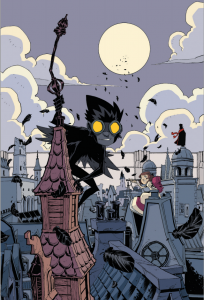
Written by: Jorge Corona
Art & Cover by: Jorge Corona
Published by: Archaia/Boom! Studios
Writer/Artist/Creator Jorge Corona gives us a lot to chew on in issue one of his new series Feathers: there’s a disembodied duo who appear only in voice over; a gleaming white-walled citadel surrounded by poorer districts and a class system to match; a faceless, whistling villain who preys on children and never forgets his muffler; and, of course, a little boy covered in the feathers that gives the book it’s name.
Corona, who recently made his comic debut with the Image series Goners last October, draws you in with a well-rendered world that immediately impresses upon the reader that Feathers is a tale of two cities: the well-fortified and wealthy white city and it’s poor surrounding area known as the “Maze.” There’s a real fairy-tale quality to the writing and the art, which deftly sets the stage for the story of a young orphan covered in feathers who is discovered by a tatty older man named Gabriel. While searching through garbage in an adjoining alley, Gabriel hears the cries of the strange, bird-like baby and rescues him from the streets.
Not a moment too soon, either, as two young urchins nearby also hear those same cries — only to be set upon by the aforementioned mysterious villain whose shadowy, scarf -wrapped appearance recalls nothing more than Orko from the He-Man and the Masters of the Universe cartoon. It’s to Corona’s credit that this comparison does nothing to detract from said villain’s imposing stature. The figure whistles to announce his arrival and does something terrible to the pair of urchins off-panel, but not before he notices the supernatural feathers left behind by our titular character’s molting.
A time jump flashes forward and finds our feathered friend in his pre-pubescence, running around the rooftops of the Maze and assisting the children of it’s streets in stealing apples from a local merchant with a little artful dodging while managing to remain hidden.
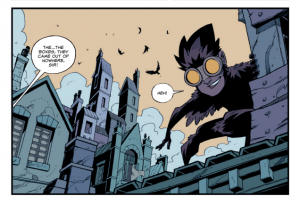
We return to the streets of the “Mazefolk” and discover that Gabriel has named the feathered boy “Poe,” in a literary nod to Edgar Allen, no doubt. The whistling, red-scarfed villain makes another appearance as Gabriel and Poe scavenge the streets by night — though our heroes manage to escape his notice. The perspective and rendering of the panels continues to give great effect here; both the allure and danger of the Maze’s winding streets is palpable.
Bianca’s trip with Lord Chappelle through the Maze reaches a predictable meet-cute ending to the first issue of Feathers, but here ‘predictable’ is not meant as criticism — but rather another way in which the book invokes the feel of a fable. I’m eagerly awaiting issue two of Feathers, where we’ll see if Corona’s story and art continue to be as strong as the opening installment in this all-ages tale.


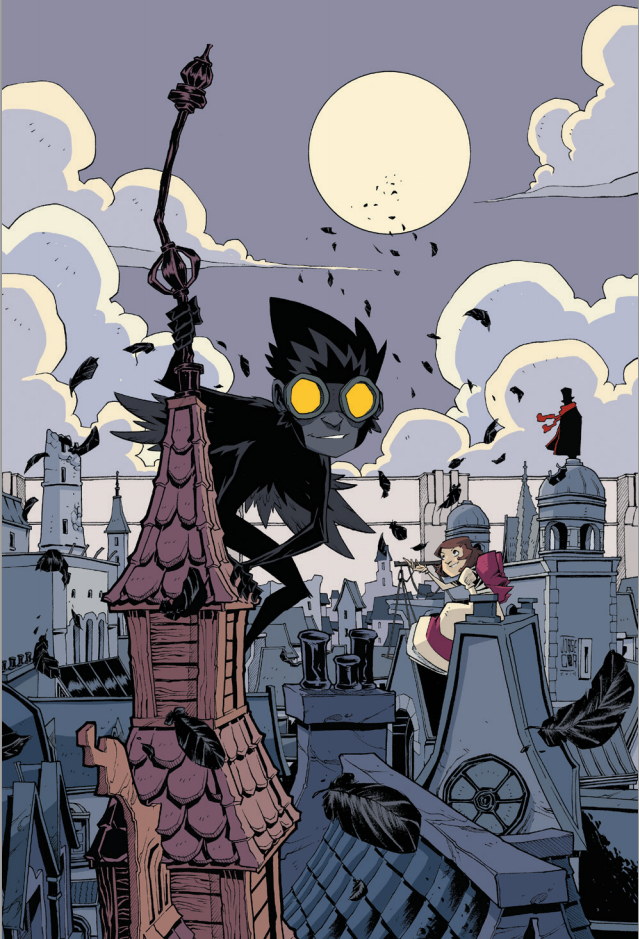
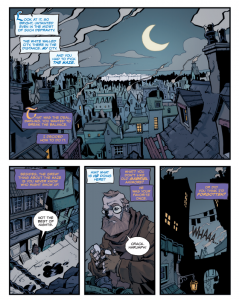
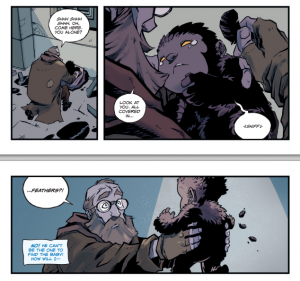
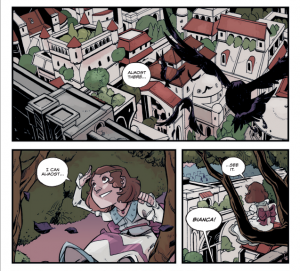
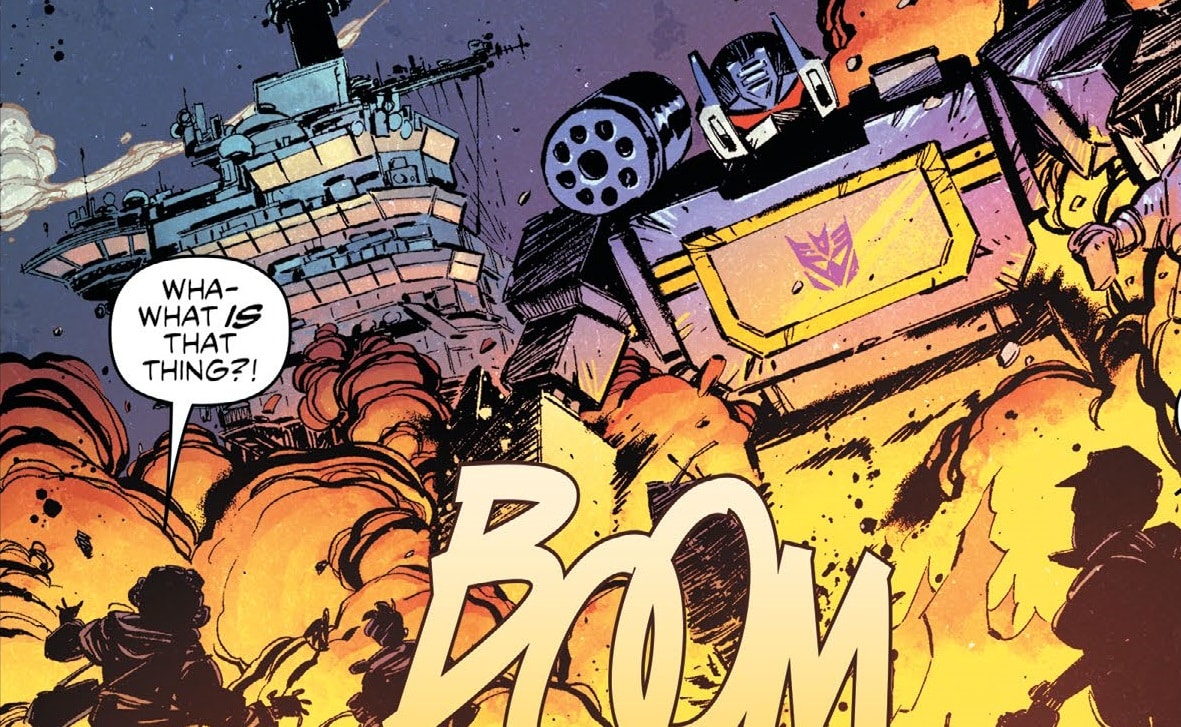





This looks fascinating. I am going to give the first issue a closer look!
I need to check this out further, if only to see Evil Orko!
Comments are closed.